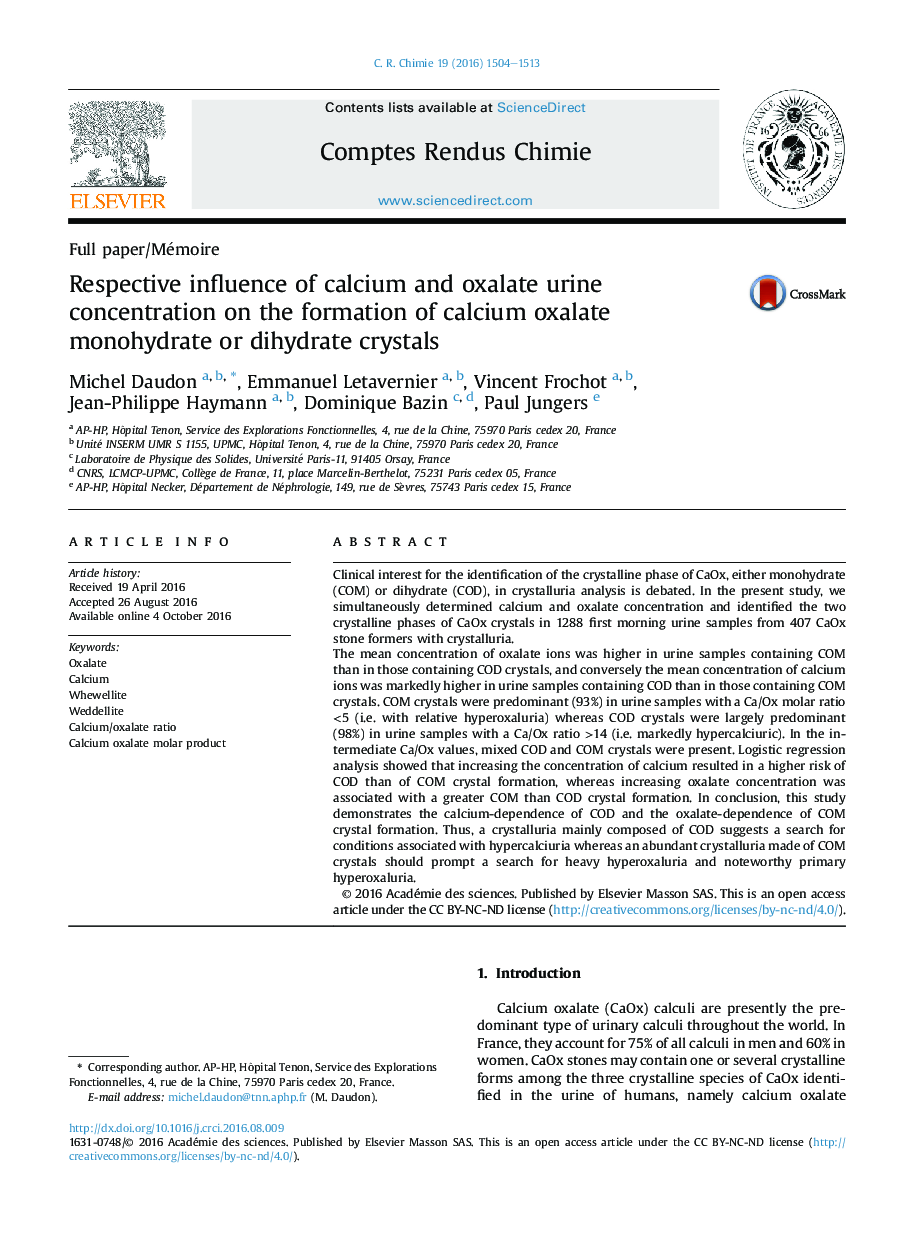| Article ID | Journal | Published Year | Pages | File Type |
|---|---|---|---|---|
| 6468947 | Comptes Rendus Chimie | 2016 | 10 Pages |
Clinical interest for the identification of the crystalline phase of CaOx, either monohydrate (COM) or dihydrate (COD), in crystalluria analysis is debated. In the present study, we simultaneously determined calcium and oxalate concentration and identified the two crystalline phases of CaOx crystals in 1288 first morning urine samples from 407 CaOx stone formers with crystalluria.The mean concentration of oxalate ions was higher in urine samples containing COM than in those containing COD crystals, and conversely the mean concentration of calcium ions was markedly higher in urine samples containing COD than in those containing COM crystals. COM crystals were predominant (93%) in urine samples with a Ca/Ox molar ratio <5 (i.e. with relative hyperoxaluria) whereas COD crystals were largely predominant (98%) in urine samples with a Ca/Ox ratio >14 (i.e. markedly hypercalciuric). In the intermediate Ca/Ox values, mixed COD and COM crystals were present. Logistic regression analysis showed that increasing the concentration of calcium resulted in a higher risk of COD than of COM crystal formation, whereas increasing oxalate concentration was associated with a greater COM than COD crystal formation. In conclusion, this study demonstrates the calcium-dependence of COD and the oxalate-dependence of COM crystal formation. Thus, a crystalluria mainly composed of COD suggests a search for conditions associated with hypercalciuria whereas an abundant crystalluria made of COM crystals should prompt a search for heavy hyperoxaluria and noteworthy primary hyperoxaluria.
